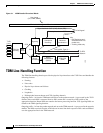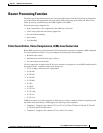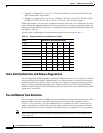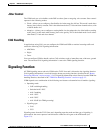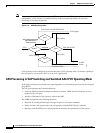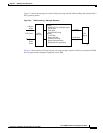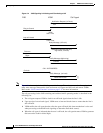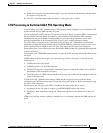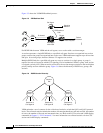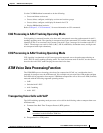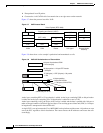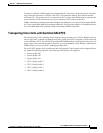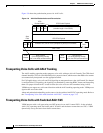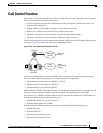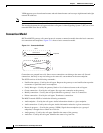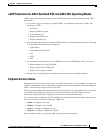
3-10
Cisco VISM Installation and Configuration Guide
Release 3.0, Part Number OL-2521-01 Rev. D0, June 2004
Chapter 3 VISM Functional Description
Signaling Function
Figure 3-5 shows the VISM PRI/backhaul process.
Figure 3-5 PRI/Backhaul Path
For RUDP links between VISM and the call agents, use a session with a session manager.
A session represents a single RUDP link to a specified call agent. Sessions are organized into session
groups, and session groups are organized into session sets. VISM architecture supports up to 64 sessions
and up to 16 session groups; however, Release 2.2 supports one session.
Multiple RUDP links for a specified call agent are set up as sessions in a single group. A group is
required for each call agent for which CCS signaling is to be backhauled. Within a group, each session
is assigned a priority level. When an active session fails, the session manager switches to the next highest
priority backup session within the group. Figure 3-6 shows the hierarchy of RUDP sets, groups, and
sessions.
Figure 3-6 RUDP Session Hierarchy
VISM maintains a set of counters for the collection of statistics at both the Q.921 and Q.931 protocol
levels. The collected statistics include the number of frames/packets/bytes sent and received, the number
of resets, the number of discards and retransmissions, etc. Refer to the CCS session and LAPD display
commands in Chapter 5, “CLI Commands,” for more information on collected statistics for the CCS
session and LAPD display commands.
MGX 8850
with VISM
Router
Call Agent
PBX
PRI Backhaul
Path
D channel
B channel
Voice Payload
Packe
t
Netwo
rk
Signaling
Network
V
44387
Session
Group 1
Sessions to
Call Agent A
Sessions to
Call Agent B
Sessions to
Call Agent C
Session
Set
Session
Group 2
Session
Group 3
44388



